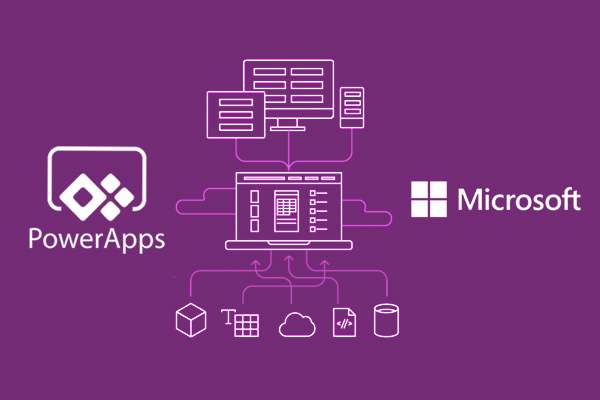
Microsoft’s PowerApps is usually termed as a suite of applications, services, connectors and a data platform that allows the user to experience a rapid application development environment for building effective applications suiting his business needs. It is quite easy to use Power Apps to build a custom business app that can help you connect the data of your business stored in any underlying data platform or other online and on-premises sources like Microsoft 365, SQL Server, etc.
The apps built under PowerApps offers rich business logic with unmatched workflow capabilities. Due to its rate of efficiency, it can help businesses get transformed from a manual process to digital or automated. Also, these apps powered by PowerApps are highly responsive and has the ability to run seamlessly in browsers as well as over smartphones and tablets. Allowing the tech developers to build a full-featured and customized business application without any coding, this amazing development by Team Microsoft has made the life of B2B and B2G segments much smoother. It has an extensible platform that allows professional developers to interact with data and mega data via programming, apply the business logic and create customized connectors for direct integration with the external data.
HISTORY OF POWERAPPS
To speed efficiency and innovation, the concept of PowerApps was first brought by Microsoft in public preview in April 2016. As per their data, in just a period of six months, there were over 124,000 users from 46,000 different organizations across 143 countries, creating numerous web and mobile apps using PowerApps. According to their statistical data, Power Apps was ready for productive use across six regions, available in 42 different languages with around 99.9% service level agreement based customers from Microsoft.
By the month of August, Microsoft had started rolling out the glimpse of PowerApps integrated into the SharePoint Online lists. It allows users to easily create a customized app by simply clicking on the command bar present on the custom list over SharePoint Online. The app appears in custom view allowing users to access it over the web as well as via Share Point Mobile App. This experience was also added for all the SharePoint online users in their 2013 and 2016 versions.
Now, employees can easily create apps in a time-saving way over any device using Microsoft Office like experiences. There are templates to get started with along with a visual designer to help automate the workflow. It uses in-built connection options which connect the apps to PowerApps or cloud services like Office 365, Salesforce, Dropbox, Dynamics CRM and OneDrive. It also allows connectors with on-premises systems like SharePoint, Oracle databases, SAP and many more. Due to its smooth functionality, PowerApps can also be easily shared like documents, allowing the co-workers of the business organization to enjoy the single app.
Coming to the section of developers and IT professionals, PowerApps brings in the advantage of Azure App Service for employee-facing apps which allow the native web and mobile-based apps to run faster on any device. It helps them to avoid spending time on making additional data connections as PowerApps can be connected with cloud service and on-premises systems allowing any user to create functional apps. And above all, PowerApps provide complete data security, strictly abiding by the corporate policies, offering a safe platform to deal in.
PowerApps has dramatically accelerated the rate at which business application was built, saving both time and effort in the entire process. It has empowered the app creators and brought in a balance in power between the IT and the business users. With a single solution of easy development of customized apps over a single click, it seems like Microsoft has offered the right tools for both: the employees as well as the developers and IT professionals.


